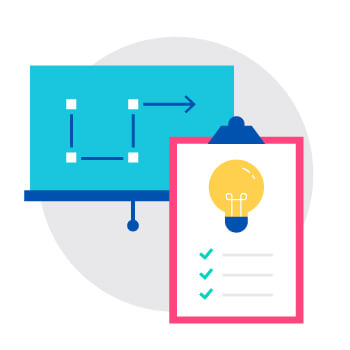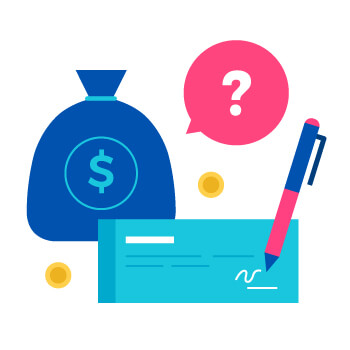8 Questions to Ask on a Sales Discovery Call to Qualify Leads

Contents
Many salespeople see the discovery call as the most important part of the sales process.
Why?
Discovery calls can set the whole tone of your relationship with a lead. Fail to dive deep during your discovery call, and you’ll likely find that deals become more complex and time-consuming than they need to be down the line.
Unfortunately, qualifying sales leads isn’t always a straightforward process. You can’t simply gaze into a crystal ball, and see a glowing future relationship where you close endless deals. There are no guarantees.
It should, therefore, come as no surprise that 22% of salespeople say qualifying is the hardest part of their job, with only prospecting (40%) and closing (36%) being named as more difficult.
Need to up your game? Start by ensuring you’re asking the right questions. These questions will give you all the information you need to be as accurate as possible when it comes to lead qualification.
Of course, this is often easier said than done. One in four buyers want to discuss budget, authority, and timeline. Needless to say, these aren’t the qualifying topics salespeople need – or want – to talk about.
To help you out, here are eight questions you can ask on your next sales discovery call to better qualify your leads.
1. What are your goals and timeline?
What do salespeople need to get from discovery calls? By the time you hang up, you need to genuinely understand the prospect and their situation so that you can determine whether or not they’re a qualified lead.
Finding out the prospect’s goals – and the timeline for hitting them – should be top of your list.
Ask about their financial goals, their operational goals, and their customer-related goals. This will help you see how your product or service can slot into the organization’s roadmap and help them achieve their goals (not to mention, start putting your pitch together).
It also gives you a good idea of how urgent their need for your product or service is. If all goes well, will the deal be closed in a week, or could closing take six months? This is essential for accuracy when it comes to financial forecasting – and for hitting your targets.
2. What problem are you trying to solve?

This is key. You need to work out if your product or service will truly solve the challenge(s) the business is attempting to overcome. If it will, that’s a huge step towards qualifying the lead. If you know it won’t, the lead should usually be disqualified, then and there.
And if you’re not sure? You’ve got some more digging to do.
Remember, most prospects will agree to a discovery call: after all, they want to know what you and your company are about. They’ll want to find out more about the product or service you’re offering, and decide whether it’s worth their time continuing to speak to you. If you can genuinely help to solve their problem, it will be.
Leverage this willingness to connect, but make sure you’re steering the conversation in the right direction. If the prospect doesn’t cover their needs on their own, ask more directly about the problem or problems they’re trying to solve in the specific area your offering supports.
3. How important is it for you to solve this problem soon?
Now it’s time to find out how much of a priority it is for the business to solve the problem that relates to your product or service. Yes, you’ve already spoken about timeline – this is about prioritization.
If their need is urgent, that’s a good sign for qualifying them as a lead. A high-priority problem will need a solution quickly; it’s unlikely to be left on the backburner.
However, if it’s low priority – or if the business has a number of other challenges it needs to overcome first – there’s a chance that the time and money allocated to solving this problem could be sidelined to deal with a bigger, scarier issue.
If the lead isn’t answering this question in the way you need, try asking why they’ve not addressed the issue before. This should shed some light on prioritization within the business, as well as any you could wind up facing obstacles.
4. How are you planning to approach solving this problem?

So you’ve found out what the problem is and how much of a priority it is. Now it’s time to discover how the business thinks it should be solved.
While the solution your lead describes might not be the approach you would recommend, it’s extremely useful to identify their planned approach.
You need to see where your product or service fits into their plan, and whether or not they’ve properly understood what it can achieve. As much as you want that sale, don’t mislead the client about the capabilities of your offering. This will just come back to bite you down the line.
It might be that the plan your contact describes isn’t best practice, or that they don’t understand all of the possibilities presented by your product or service. If so, this is a great opportunity to demonstrate your expertise and add value. Just tread carefully.
5. Do you need a product or service to overcome the problem?
It might sound counterintuitive, because of course you want the lead to use your product or service to overcome whatever problem they’re trying to solve.
But when it comes to qualifying leads, you need to understand how likely it is that the lead will actually convert.
This question lends you insight into whether your lead will definitely be buying a product or service to solve their problem – and therefore you simply need to ensure your offering is stronger than that of your competitors – or whether there’s a chance they’ll go it alone.
If a product or service is 100% necessary to solve the problem, put more points in the “Qualified” column. If there’s a chance the business will go solo, this takes you closer towards disqualification.
6. Which budget is the funding coming from?

In an ideal world, all discovery calls would include the relevant decision-maker (or decision-makers). However, as every sales rep knows, it’s not always possible to get the person holding the purse strings on calls. In these cases, it’s up to you to give your contact everything they need to convince the decision maker.
Asking where the funding is coming from will help you find out who else you need to win over in order to close. Find out as much as you can about this person (without being creepy, of course).
You can also ask how invested the decision maker is in solving the problem and how sold they are on using your product or service to do so. This will help you better gauge what you’re up against when it comes to closing the sale.
7. What are the main obstacles to carrying out the plan?
There’s a reason your prospect hasn’t solved their problem yet. One possibility is that they haven’t yet met you. But another much more likely cause is that there are financial or structural roadblocks stopping the business from successfully solving the problem.
What roadblocks is your lead going to have to overcome in order to implement their plan?
Is there a chance it will be derailed? If so, what can you do to help them push it through?
Listen carefully to these answers. If the roadblocks stated seem insurmountable or especially numerous, it might be time to step back from the opportunity to focus on leads with a higher likelihood of coming through.
8. What does a good outcome look like?
What is your lead’s ideal scenario? Will your product or service truly help to achieve this? And how can you fit your offering into this scenario?
With this question, it’s time to add some more value. Is your contact’s ideal scenario likely, or even possible? Perhaps they’ve underestimated what can be done, and you can give them an even better outlook.
There’s no point putting time and effort into pushing the lead along the sales cycle, only for them to realize later on your offering won’t actually help them in the way they need. Brush up on case studies as well. There’s nothing like proven evidence to make discovery calls as effective as possible.





